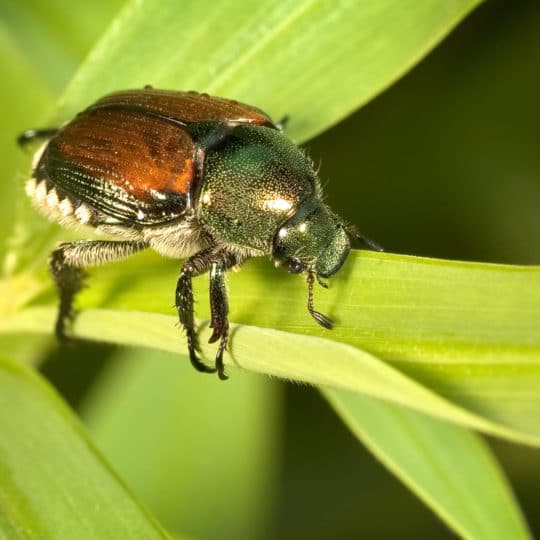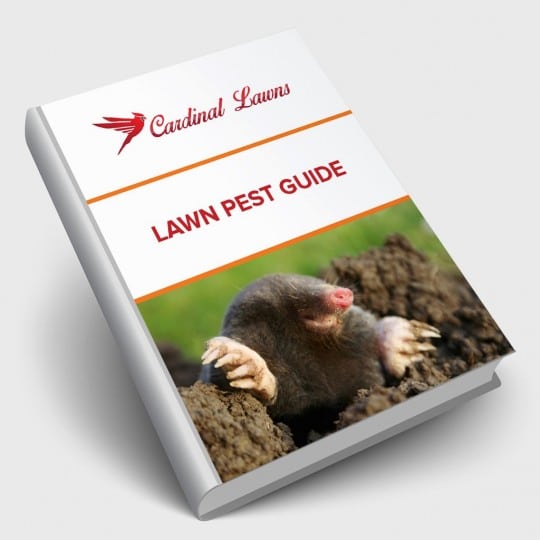Telltale Signs of Japanese Beetles
Noticing Early Signs to Save Your Yard
Posted
December 13, 2018

Sometimes the most obvious signs of Japanese beetles comes too late. If you see these devastating garden pests, or the damage they’ve already done to your plants, you may have missed some of the early telltale signs.
Early Signs of Japanese Beetles
You may think that the winter weather has killed off the latest band of Japanese beetles, but they’re usually still living in the soil, laying dormant, gaining an appetite for new plants come spring.
Female Japanese beetles lay their eggs in the ground that hatch as white grubs. They live in the soil and feed on the roots of grass and plants. If you see dead spots of grass in your lawn, or an influx of birds around your yard, these may be early signs of an overpopulation of grubs. There are several forms of grub control including various insecticides that can help with this issue. Products that contains the bacteria milky spore are also helpful. You can also spray a soapy water solution to the ground to force the grubs to the surface, where hungry birds will help you get rid of pests and save your plants from hungry beetles in the summer.
Signs of Japanese Beetle Damage
Most active in groups on sunny days from late June until early fall, beetles can do significant damage to trees, ornamental shrubs, plants, and crops. They are big enough to see flying from plant to plant. It’s also easy to notice the damage they cause—lacy, skeleton-like leaves on plants and trees. A severe infestation may have a scorched appearance.
Preventing Japanese Beetles
There are many ways to protect the trees and plants in your yard from these invasive insects. Try using a combination of these solutions for best results.
- Handpicking. This method is more successful for small infestations on smaller plants, not larger trees.
- Neem oil. Deter beetles when applied at the first sign of an attack.
- Proper lawn maintenance. Keeping a well-fed, watered, weeded, and maintained yard promotes healthy plants, which are less susceptible to infestations.
- Plant type. Certain species are less likely to attract pests. Some Japanese beetles are not attracted to red maple, magnolia, hemlock, dogwood, and boxwood. However, they do prefer birch, Japanese maple, roses, and some fruit trees.
- Insecticides. Certain chemicals are effective, but you should contact a local lawn specialist before dusting or spraying larger areas.
Make Cardinal Lawns your first call for any help at the first signs of Japanese beetles. From grub control to beetle infestations, you can get your yard back and protect your plants.

Download Your FREE Lawn Pest Guide
Pests become most prevalent during the heat and humidity of summer. Take some time to learn about the signs of infestations before any damage can be caused to your landscape. This handy guide will teach you how to spot common lawn pests and how to keep them from causing harm to you and your property.